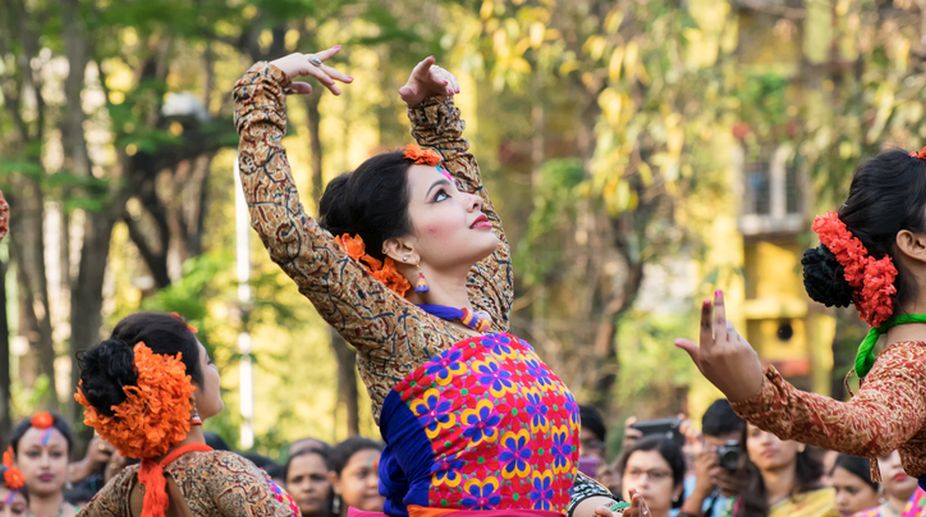Festivals embodying the essence of Goan traditions
As the colours of Shigmo paint the streets with exuberance, various other festivals prepare to showcase their diverse cultural heritage through a series of unique festivals.
Unleash the ectasy within, green up and celebrate the Hariyali Teej festival with pious fervour and joy.

(Getty Images)
Hariyali Teej is celebrated on the third day of first fortnight in the Hindu month of Shravan with extreme jollity and piety by women flock in Hindu community all around the world. The festival commemorates abundance of greenery and good harvest. The day is celebrated with traditional songs, dances, swings and delicious food. All these gears escalate the dynamism of festivities.
Facts about Hariyali Teej festival:
In the name of monsoon season: The festival of Teej is a devotion towards Mother Nature. It marks the beginning of monsoon season India. Hariyali symbolises greenery and prosperity that is all around during this time of the year. It is a celebration of rebirth of the Earth after the scorching heat of summer.
Advertisement
Dedicated to Goddess Parvati: It is believed that Devi Parvati underwent a reparation and prayed incessantly to show her devoutness towards Lord Shiva. Lord Shiva listened to her prayers and accepted her as his wife after her 108th birth. Hindu women honour Goddess Parvati on this day and seek her blessings, imbibing her spirit as a dedicated wife to her husband Lord Shiva.
Women fasting: Hariyali Teej is a festival for Hindu women (married or unmarried) celebrated for marital bliss and the well-being of their husbands and family members. Women witness fast to please Goddess Parvati. Those who’re unmarried fast and pray to be blessed by a husband like Lord Shiva.
Solah Shringaar: On the day of Hariyali Teej, married women adorn themselves with ‘Solah Shrigaar’ comprising of traditional dresses (lehngas and sarees), sindoor, bindiya, kajal, mehndi, nail paint, all other makeups, maang tika, nose rings, ear rings, mangal sutra, bangles, anklets, toe rings etc. Solah shrigaar is believed to be worn to protect husbands from all evil spirits.
Sindhara: There is a custom of sending ‘Sindhara’ to the daughter and her in-laws by her parents. The newly-weds go to their parent’s house as a part of the ritual on their first Teej. The colour of mehndi on hands tells about the love showered by husbands. There is an inordinate connotation of wearing green traditional attire and green bangles on this day.
Dancing, singing and swinging: Women especially in North India embrace this festival by singing, dancing and playing in the swing. It is a customary practice for the women themselves to sit in swings in imitation of deities, Lord Krishna and Radha. This is because at the time of Hariyali Teej, swings are laid down in the shrines of Vrindavan for Radha-Krishna to swing upon. The main attraction is the gold-ornamented swing of Lord Krishna which comes only once a year. This religious ceremony is called ‘Jhullan Leela’. Because of this ceremony, swings are hung on the branches of trees everywhere in North India where Teej is celebrated. Women spend their day swinging along with their family and friends. They sing traditional songs and dance with all freedom to make merriment inside out.
It is one of the most loved and celebrated women-related festivals. Green colour is its symbol. Use more and more of green colour in your Teej celebration. Happy Teej!
Advertisement